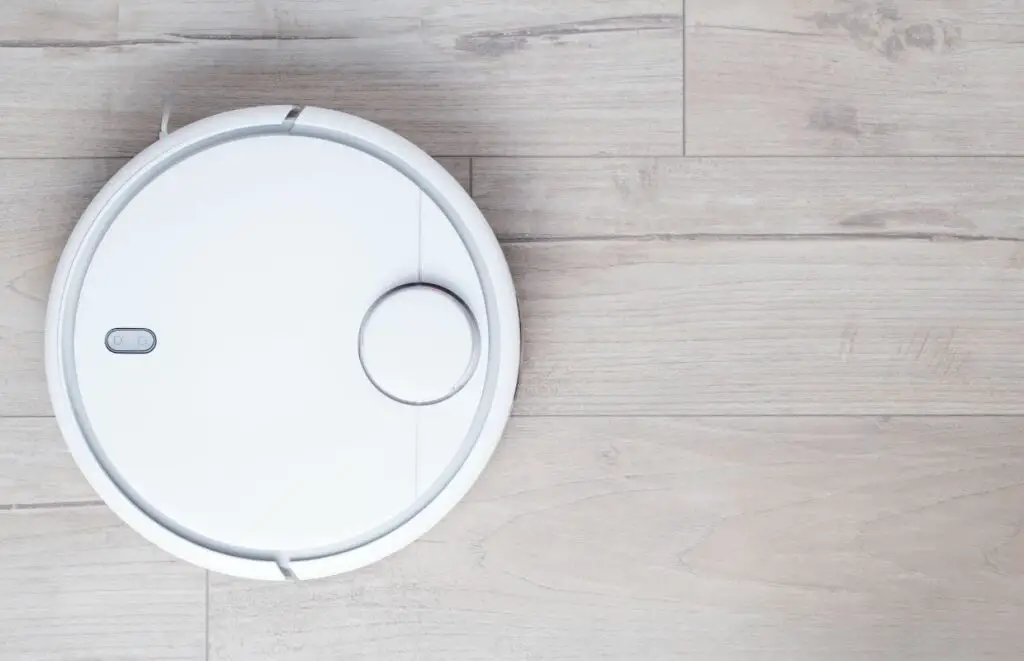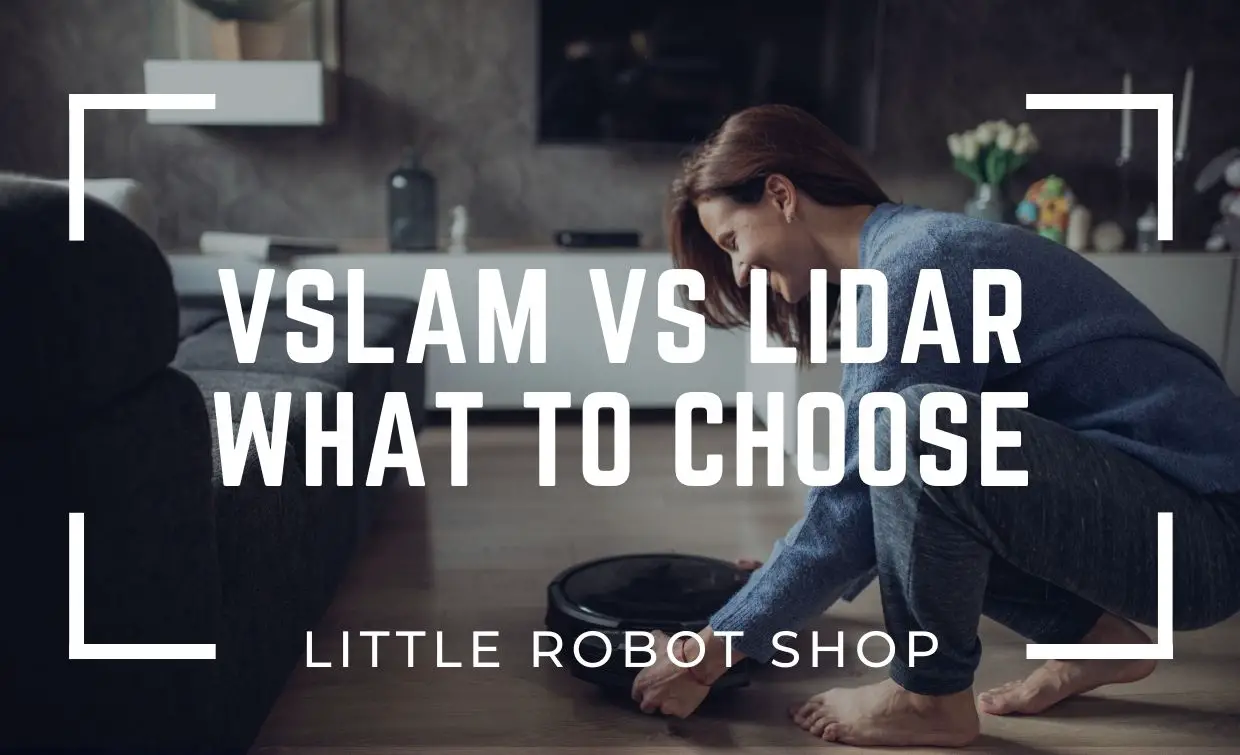Are you feeling overwhelmed by the myriad of robot vacuum cleaner options out there? Don’t worry, you’re not alone. Choosing the right one can feel like a daunting task, especially when faced with jargon like vSLAM and Lidar navigation. You’re probably asking yourself – What do these terms even mean? How do they impact the performance of the vacuum? Which one is better for my specific needs and budget?
Well, that’s precisely what we’re here to simplify for you. At Little Robot Shop, we’re passionate about breaking down complex robotics information into easy-to-digest nuggets. This post will dissect the crucial differences and compare vSLAM vs Lidar navigation, guiding you through the maze of robot vacuum technology and enabling you to confidently select the best model for your needs.
Intrigued? Read on to become a savvy robot vacuum shopper!
Both Lidar and vSLAM vacuums have advantages and disadvantages. However, a new generation of devices is pushing things to the next level by combining the two and artificial intelligence (AI).
This takes advantage of each method’s advantages, and as the algorithms develop, the cameras will become valuable data sources for artificial intelligence navigation.
LIDAR is a light sensor. It uses lasers that shoot in different directions gathering information about objects around it. This technology can be found in autonomous vehicles today. A camera uses key features, making it great for visual data. This information is stored for later use when the object appears again.
Overall, Lidar (also sometimes known as laser slam) technology outperforms vSLAM because its maps and virtual borders are more accurate. vSLAM robot vacuums, on the other hand, are becoming more popular, with companies focusing on refining the algorithms.

When they originally came out, robot vacuums had basic navigation methods and were cleaned in a haphazard manner. They could clean enormous areas but were inefficient since they kept scrubbing the same spots.
Modern robot vacuum navigation systems are enabled by algorithms and optical sensors in more advanced models. The vacuum can go in straight lines and cover all regions thanks to advanced technology.
To clean successfully, the vacuum robot must first map out your home. The software will then save this information and use it in the future while vacuuming.
Most older robotic vacuum cleaners do not see the world through cameras. Instead, they use cliff sensors, bump sensors, wall sensors, and optical encoders to detect and quantify the world around them as well as their own progress through it.
Cliff sensors work by reflecting infrared light off the floor to determine the distance between the robot base and the floor. If the distance to the floor suddenly increases, the robot approaches a stair edge or something similar and will back off to prevent falling over it.
The impact activates the bump sensor when the robot vacuum collides with obstacles, such as a wall or a chair leg. Bump sensors work similarly to cliff sensors, but in the opposite direction as they alert the robot when it is approaching a wall or other objects, allowing it to follow it.
Light Detection
The most significant are optical encoders, and sensors on the robot’s wheels that inform how far it has traveled. They are termed optical encoders because they use a light detection sensor to identify how many times the wheels have revolved.
The robot can calculate how far it has traveled based on this. Additional sensors, such as a dust scanner to see how much dust is being picked up may be included in different models, but those are the core sensors that all robotic vslam vacuums have.
Positioning
Location and Mapping Accuracy In static and simple environments, laser SLAM positioning is generally better than visual SLAM, but in a larger scale and dynamic environment, visual SLAM has a better effect because of its texture information.
Visual Slam System
In recent years, with the development of sparse non-linear optimization theory (Bundle Adjustment) and computer technology, real-time visual SLAM is no longer a dream. Usually, a visual SLAM system consists of a front end and a back end. The front end is responsible for the position and posture of the incremental computer robot through vision, which is faster.
What is vSLAM (Simultaneous Localization)?
The visual SLAM (simultaneous localization and mapping) method maps and plots a navigation path with the use of a camera and an IMU. This is known as Visual-Inertial Odometry, or VIO, when an IMU is also used.
The use of motion sensor data to determine a robot’s change in location over time, known as odometry. While SLAM navigation may be done both indoors and outdoors, it is mostly used for an indoor robotic vacuum cleaner.
VSLAM relies on setpoints, which are the points of interest identified by the algorithm, that is followed over successive camera frames to triangulate a 3D position, a process known as feature-point triangulation.
This data is communicated back to generate a 3D map and pinpoint the robot’s location. When rotating the camera past a blank wall, an IMU can be added to improve feature-point tracking. This is essential for drones and other flight-based robots that do not have the ability to use odometry from their wheels.
What is LiDAR SLAM?
Similar to visual SLAM, a LiDAR-based SLAM system uses a laser sensor and an IMU to map a room, but with superior accuracy in one dimension. It is common in premium models such as Samsung’s new range of robot vacuums.
LiDAR uses light detection and ranging in several transceivers to illuminate an object such as a wall or a chair leg to determine its distance. Each transceiver rapidly generates pulsed light, which is then measured to determine position and distance.
Due to the speed at which light travels, very precise laser performance is required to track the exact distance between the robot and each object. Because of this necessity for precision, LiDAR is a quick method that offers higher accuracy.
When deciding between a lidar vs camera robot vacuum and determining which navigation system to use in your robotics applications, it is crucial to keep in mind the common issues a vacuum may run into. Robots need to navigate a variety of surfaces, paths, and objects.
A robotic cleaner, for example, must navigate hardwood floors, tile, and carpets to find the best route between rooms. Specific location-based data, as well as an understanding of common environmental constraints, are sometimes required.
The robot, for example, needs to know if it’s approaching obstacles such as a flight of stairs or how distant the coffee table is from the door. Navigating with visual SLAM or LiDAR technology can solve these problems, with LiDAR being faster, more accurate, and more expensive.
VSlam offers a more cost-effective solution that can use less expensive equipment, a camera rather than lasers, and can 3D map, although it is not as exact or fast as LiDAR systems. Visual SLAM also has the advantage of viewing more of the scene than LiDAR because its sensor can observe more of its environment.
If you have ever spent time researching robot vacuums, we know how quickly the information can get confusing. With so many robot vacuums on the market, choosing which is best for you can be challenging.
For those who are looking for the most accurate navigation system possible, both vSLAM and LiDAR are excellent choices. With either technology in place, you can get your exact location with pinpoint accuracy and without sacrificing any other features that may come along.
The accuracy and cost of these systems vary significantly so it is hard to say which one would suit you better without knowing more details about your needs.
We hope this guide has helped to clear up some of the confusion and made it easier for you to figure out which one best suits your needs. Whether you want a more affordable option or are looking for something with extended battery life, a robot vacuum will likely work well in your home.
The first thing you will need to do is decide how much money you want to spend. There are many affordable models that work just as well as those with higher price tags. Do your research and find one that suits your needs without breaking the bank!

Matt is the founder of the Little Robot Shop, who has spent much of the last decade hacking home cleaning with various robots and devices to make keeping his home clean as easy as possible. Not an easy task with two young children.
When not working on the Little Robot Shop website or YouTube channel, he works as technical support and product specialist for a fast-growing digital company. He does his best to get his younglings to code, which will be an essential skill in the future.
